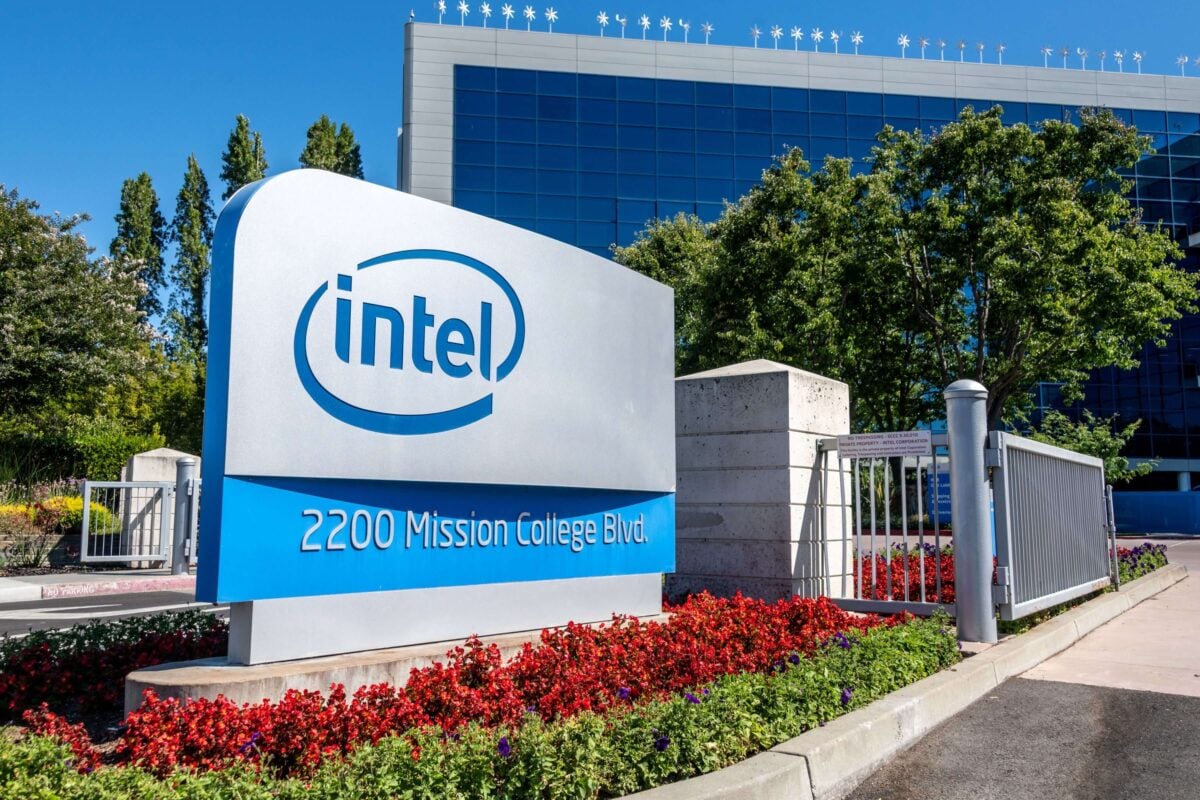TLDR
- Intel stock trades around $38, up nearly 90% year-to-date after receiving $15 billion in strategic investments from the U.S. government, Nvidia, and SoftBank
- Q3 earnings beat expectations with revenue of $13.7 billion and adjusted EPS of $0.23, compared to analyst estimates of roughly breakeven
- The company swung to a GAAP profit of $4.1 billion in Q3 after posting losses a year ago, with gross margins hitting 40%
- Wall Street analysts remain cautious with average price targets around $26-30 per share, roughly 25% below current levels, citing execution risks
- Intel faces supply constraints on older chip processes and won’t reach acceptable yields on its advanced 18A process until 2027
Intel’s stock has climbed to $38 per share as of October 27, 2025. This marks the highest level in nearly two years.
The rally represents an 85-90% gain year-to-date. This far exceeds the S&P 500’s roughly 6% return over the same period.
The turnaround began with a series of strategic investments totaling about $15 billion. In August, the U.S. government took a roughly 10% stake in Intel worth $8.9 billion as part of the CHIPS Act.
Nvidia invested $5 billion for approximately a 4% stake in the company. SoftBank’s Vision Fund added another $2 billion through a quiet share purchase.
These investments provided Intel with fresh capital to fund its manufacturing expansion. The company had been struggling with financial strain after posting its first annual loss in decades during 2024.
CEO Lip-Bu Tan took the helm in March 2025. He orchestrated these deals while implementing aggressive cost-cutting measures.
The company reduced its workforce by more than 20%. Intel also sold a majority stake in its Altera FPGA unit to raise additional capital.
Earnings Drive Stock Higher
Intel reported third-quarter results on October 23 that exceeded Wall Street expectations. Revenue came in at $13.7 billion, up 3% year-over-year.
Adjusted earnings per share reached $0.23. Analysts had expected roughly breakeven results.
Gross margins hit 40%, compared to expectations of around 35%. The company posted GAAP net income of approximately $4.1 billion.
This marked a sharp reversal from the large loss Intel recorded in Q3 2024. The stock jumped 7-9% following the earnings announcement.
CFO Dave Zinsner described the situation as a “high-class problem.” Demand for Intel’s chips currently exceeds the company’s supply capacity.
The client computing division generated $8.5 billion in revenue, up 5% year-over-year. The data center segment brought in $4.1 billion with operating margins reaching 23.4%.
Intel ended Q3 with $30.9 billion in cash and short-term investments. This represents an increase from $22.1 billion at the end of 2024.
Total debt declined by about $3.4 billion to $46.6 billion. The improved balance sheet gives Intel more flexibility to invest in its foundry business.
Manufacturing Challenges Remain
Intel faces capacity constraints on its older Intel 10 and Intel 7 manufacturing processes. The company can’t fully meet demand for chips built on these technologies.
For Q4, Intel plans to prioritize server CPU production over entry-level PC chips. This decision will boost the data center business while modestly reducing client computing sales.
The company’s advanced 18A manufacturing process shows promise but needs improvement. Zinsner warned that yields won’t reach acceptable levels until 2027.
The 18A process will support at least three generations of PC and server products. Panther Lake laptop CPUs using 18A are expected to ship before year-end.
Intel expects the PC market to reach 290 million units this year. This would represent the strongest growth since 2021.
The Windows 11 refresh is driving some of this demand. Microsoft’s decision to end Windows 10 support is pushing upgrades.
Wall Street remains divided on Intel’s prospects. The average 12-month price target sits around $26-30 per share, roughly 25% below current levels.
Bank of America downgraded Intel to Underperform, warning the stock has “run too far, too fast.” HSBC cut its rating to Reduce citing execution risks.
Intel’s forward P/E ratio sits near 70 times earnings. This compares to roughly 30 times for Nvidia and 40 times for AMD.
Only a handful of analysts maintain bullish price targets above $40. Most firms rate the stock as Hold or Sell at current levels.
The company’s Q4 guidance calls for revenue of $12.8-13.8 billion with EPS around $0.08. These figures align with analyst expectations but suggest only modest sequential growth.
Intel’s stock pulled back slightly from its October peak near $39. The shares now trade in the mid-to-upper $30s range with support around $34-36.






